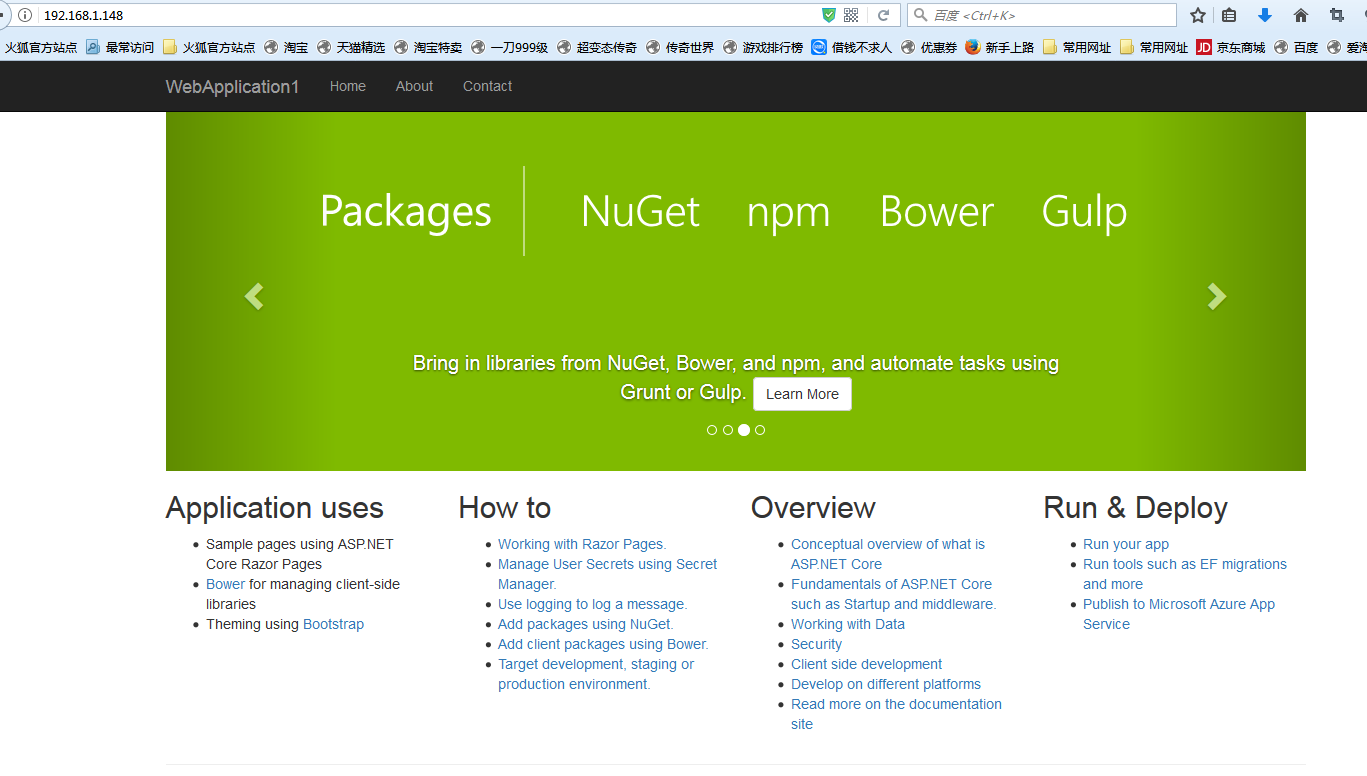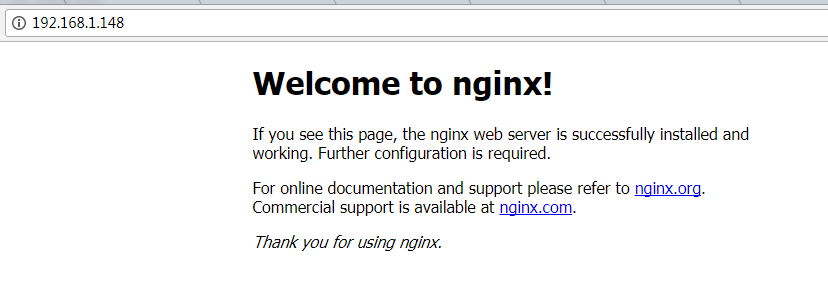一、Linux .NET Core简介
一直以来,微软只对自家平台提供.NET支持,这样等于让这个“理论上”可以跨平台的框架在Linux和macOS上的支持只能由第三方项目提供(比如Mono .NET)。
直到微软推出完全开源的.NET Core。这个开源的平台兼容.NET Standard,并且能在Windows、Linux和MacOS上提供完全一致的API。虽然这个小巧的.NET框架只是标准.NET的一个子集,但是已经相当强大了。
一方面,这个小巧的框架可以让某些功能性应用同时运行在三个平台上(就像某些功能性的Python脚本一样),另一方面,这也可以让服务器运维人员将ASP .NET服务程序部署在Linux服务器上(特别是对于运行Windows Server较为吃力的服务器)。
官网参考资料:https://www.microsoft.com/net/core#linuxcentos
二、Linux .NET Core2.0 环境部署前准备
1.环境说明:
服务器系统:CentOS 7.2.1511
2.安装前准备(关闭防火墙、关闭selinux)
1)关闭firewall:
systemctl stop firewalld.service #停止firewallsystemctl disable firewalld.service #禁止firewall开机启动firewall-cmd --state #查看默认防火墙状态(关闭后显示notrunning,开启后显示running)
2)关闭selinux
sed -i "s/SELINUX=enforcing/SELINUX=disabled/g" /etc/selinux/config
查看改后文件如下:
[root@localhost ~]# cat /etc/selinux/config # This file controls the state of SELinux on the system.# SELINUX= can take one of these three values:# enforcing - SELinux security policy is enforced.# permissive - SELinux prints warnings instead of enforcing.# disabled - No SELinux policy is loaded.SELINUX=disabled# SELINUXTYPE= can take one of three two values:# targeted - Targeted processes are protected,# minimum - Modification of targeted policy. Only selected processes are protected. # mls - Multi Level Security protection.SELINUXTYPE=targeted
3)重启Centos
三、Centos 部署.NET Core2.0 环境
1.添加DOTNET产品
在安装.NET核心之前,您需要注册微软产品提要。这只需要做一次。首先,注册微软签名密钥,然后添加微软产品提要。
rpm --import https://packages.microsoft.com/keys/microsoft.asc sh -c 'echo -e "[packages-microsoft-com-prod]nname=packages-microsoft-com-prod nbaseurl=https://packages.microsoft.com/yumrepos/microsoft-rhel7.3-prodnenabled=1ngpgcheck=1ngpgkey=https://packages.microsoft.com/keys/microsoft.asc" > /etc/yum.repos.d/dotnetdev.repo'
2.安装.NET核心SDK
在下一步之前,请从您的系统中删除.NET .NET以前的任何预览版本。
以下命令更新用于安装的产品列表,安装.NET核心所需的组件,然后安装.NET核心SDK。
yum updateyum install libunwind libicu -yyum install dotnet-sdk-2.0.0 -y
3.检查dotnet是否安装成功与版本查看
dotnet --infodotnet --version
四、测试.NET Core2.0 环境
1.在home目录下初始化一个测试环境并输出”Hello World “内容 (测试方式一,可忽略)
cd /homedotnet new console -o hwappcd hwappdotnet run
输出空内容如下:
[root@localhost hwapp]# dotnet runHello World!
2.上传.net core的实例页面进行测试 (测试方式二、推荐)
Centos 下.net core 2 环境测试用例 (把它上传到/home目录下或自定义的目录)
下载地址:
http://down.51cto.com/data/2334968
执行以下命令
cd /home/WebApplication1dotnet restore //如果使过用测试方式一,就需先执行这命令重新加载一下当前新的网站文件dotnet run
运行后如下图:

通过IE访问测试页

五、安装配置nginx对ASP.NET Core应用的转发
1.安装Nginx环境
[root@localhost ~]#curl -o nginx.rpm http://nginx.org/packages/centos/7/noarch/RPMS/nginx-release-centos-7-0.el7.ngx.noarch.rpm[root@localhost ~]#rpm -ivh nginx.rpm[root@localhost ~]#yum install nginx -y
输入:systemctl start nginx 来启动nginx。
[root@localhost ~]# systemctl start nginx
输入:systemctl enable nginx 来设置nginx的开机启动(linux宕机、重启会自动运行nginx不需要连上去输入命令)
[root@localhost ~]#systemctl enable nginxCreated symlink from /etc/systemd/system/multi-user.target.wants/nginx.service to /usr/lib/systemd/system/nginx.service.
2.通过iE检查能否访问
[root@localhost nginx-1.8.1]# ps -ef|grep nginxroot 14626 1 0 08:47 ? 00:00:00 nginx: master process nginxnginx 14627 14626 0 08:47 ? 00:00:00 nginx: worker processroot 14636 3269 0 08:49 pts/1 00:00:00 grep --color=auto nginx

nginx常用的操作命令
systemctl start nginx.service #启动nginx服务
systemctl enable nginx.service #设置开机自启动
systemctl disable nginx.service #停止开机自启动
systemctl status nginx.service #查看服务当前状态
systemctl restart nginx.service #重新启动服务
systemctl list-units –type=service #查看所有已启动的服务
4.防火墙配置(如果系统有防火墙就需要进行写入规则)
命令:firewall-cmd –zone=public –add-port=80/tcp –permanent(开放80端口)
命令:systemctl restart firewalld(重启防火墙以使配置即时生效)
5.配置nginx对ASP.NET Core应用的转发
修改 /etc/nginx/conf.d/default.conf 文件。
将文件内容替换为
server { listen 80; location / { proxy_pass http://localhost:88; proxy_http_version 1.1; proxy_set_header Upgrade $http_upgrade; proxy_set_header Connection keep-alive; proxy_set_header Host $host; proxy_cache_bypass $http_upgrade; }} 重新加载nignx
[root@localhost nginx]# nginx -s reload
nginx的配置己完成
6.开启dotnet run进行测试
[root@localhost ~]# cd /home/WebApplication1/[root@localhost WebApplication1]# dotnet runUsing launch settings from /home/WebApplication1/Properties/launchSettings.json...Hosting environment: DevelopmentContent root path: /home/WebApplication1Now listening on: http://[::]:88Application started. Press Ctrl+C to shut down.
通过IP 80端口访问

六、配置守护服务(Supervisor)
目前存在三个问题
问题1:ASP.NET Core应用程序运行在shell之中,如果关闭shell则会发现ASP.NET Core应用被关闭,从而导致应用无法访问,这种情况当然是我们不想遇到的,而且生产环境对这种情况是零容忍的。
问题2:如果ASP.NET Core进程意外终止那么需要人为连进shell进行再次启动,往往这种操作都不够及时。
问题3:如果服务器宕机或需要重启我们则还是需要连入shell进行启动。
为了解决这个问题,我们需要有一个程序来监听ASP.NET Core 应用程序的状况。在应用程序停止运行的时候立即重新启动。这边我们用到了Supervisor这个工具,Supervisor使用Python开发的。
1.安装Supervisor
[root@localhost /]# yum install python-setuptools -y[root@localhost /]#easy_install supervisor
2.配置Supervisor
[root@localhost /]#mkdir /etc/supervisor[root@localhost /]#echo_supervisord_conf > /etc/supervisor/supervisord.conf
修改supervisord.conf文件,将文件尾部的配置
[root@localhost /]# vi /etc/supervisor/supervisord.conf
将里面的最后两行:
;[include] ;files = relative/directory/*.ini
改为
[include]files = conf.d/*.conf
ps:如果服务已启动,修改配置文件可用“supervisorctl reload”命令来使其生效
3.配置对ASP.NET Core应用的守护
创建一个 WebApplication1.conf文件,内容大致如下
[root@localhost /]# vi WebApplication1.conf[program:WebApplication1]command=dotnet WebApplication1.dll ; 运行程序的命令directory=/home/WebApplication1/ ; 命令执行的目录autorestart=true ; 程序意外退出是否自动重启stderr_logfile=/var/log/WebApplication1.err.log ; 错误日志文件stdout_logfile=/var/log/WebApplication1.out.log ; 输出日志文件environment=ASPNETCORE_ENVIRONMENT=Production ; 进程环境变量user=root ; 进程执行的用户身份stopsignal=INT
将文件拷贝至:“/etc/supervisor/conf.d/WebApplication1.conf”下
[root@localhost /]#mkdir /etc/supervisor/conf.d[root@localhost /]#cp WebApplication1.conf /etc/supervisor/conf.d/
运行supervisord,查看是否生效
[root@localhost /]#supervisord -c /etc/supervisor/supervisord.confsupervisord -c /etc/supervisor/supervisord.conf[root@localhost /]# ps -ef | grep WebApplication1root 29878 29685 0 09:57 ? 00:00:00 dotnet WebApplication1.dllroot 29892 29363 0 09:57 pts/3 00:00:00 grep --color=auto WebApplication1
如果存在dotnet WebApplication1.dll 进程则代表运行成功,这时候在使用浏览器进行访问。

至此关于ASP.NET Core应用程序的守护即配置完成。
Supervisor守护进程常用操作
【启动supervisord】
确保配置无误后可以在每台主机上使用下面的命令启动supervisor的服务器端supervisord
supervisord
【停止supervisord】
supervisorctl shutdown
【重新加载配置文件】
supervisorctl reload
七 、配置Supervisor开机启动
新建一个“supervisord.service”文件
[root@localhost /]# vi supervisord.service# dservice for systemd (CentOS 7.0+)# by ET-CS (https://github.com/ET-CS)[Unit]Description=Supervisor daemon[Service]Type=forkingExecStart=/usr/bin/supervisord -c /etc/supervisor/supervisord.confExecStop=/usr/bin/supervisorctl shutdownExecReload=/usr/bin/supervisorctl reloadKillMode=processRestart=on-failureRestartSec=42s[Install]WantedBy=multi-user.target
将文件拷贝至:“/usr/lib/systemd/system/supervisord.service”
[root@localhost /]# cp supervisord.service /usr/lib/systemd/system/
执行命令:systemctl enable supervisord
[root@localhost /]# systemctl enable supervisordCreated symlink from /etc/systemd/system/multi-user.target.wants/supervisord.service to /usr/lib/systemd/system/supervisord.service.
执行命令:systemctl is-enabled supervisord #来验证是否为开机启动
[root@localhost /]# systemctl is-enabled supervisord
重启系统看能否能成功访问
[root@localhost /]# reboot

以上既是 Centos7系统下搭建.NET Core2.0+Nginx+Supervisor+Mysql环境的详细方法,希望对大家有所帮助
注:相关教程知识阅读请移步到服务器教程频道。